Replaced by Mount Panorama: Bathurst’s Original Racetrack

Picture this: A race track on the backroads of Bathurst that was so wild that it had to be replaced by Mount Panorama. That layout was the Vale Circuit, and it’s a must-visit on your next Bathurst pilgrimage.
The best part is, the crazy, undulating 11.635km blast through the countryside largely remains in place to this day, and it’s all in the shadows of the Mount Panorama circuit, a short drive from the downtown business area.
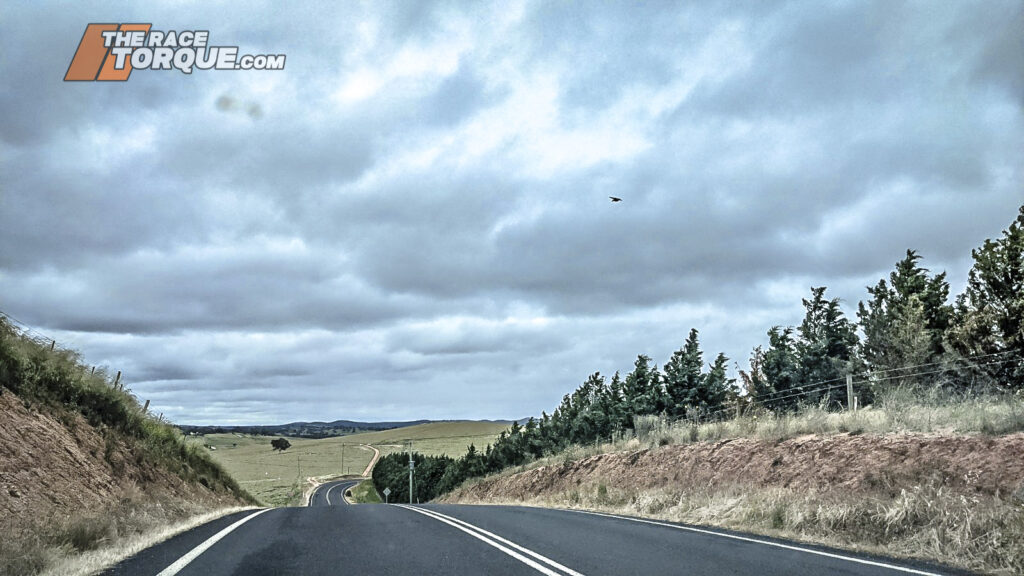
Photo: Richard Craill
In the Beginning…
Saying that the Vale Circuit is Bathurst’s original racetrack isn’t quite telling the truth.
Motorsport, and specifically motorcycle racing, were synonymous with the sporting venues and the roads of the Bathurst region dating back to the dawn of the automotive age.
Varying layouts took in spectacular scenery, and they all the set the scene for the bigger things to come.
Keep in mind, too, that these were times when public road racing for cars was officially frowned upon in New South Wales, with two-wheeled machinery seemingly given a hall pass.
With the bulk of events running on roads that were still open to the public during competition, by 1931, the Auto Cycle Union of NSW was being pressured by the local constabulary to organise more manageable arrangements.
Some rare video footage from the era.
Solution on the Outskirts
The solution was the Vale Circuit, with the Bathurst City Council and the Abercrombie Shire Council getting together to form a street track including the main road from Bathurst to the town of Perthville, which ultimately wends its way on to Goulburn.
A flat-out blast through the undulating countryside, the dirt roads threw up plenty of dramas themselves, rutting and corrugating, churning up continuous blinding dust.
That is, with the exception of 1935, when a driving rain turned the course into a mud pit.
It wasn’t all dirt, though, there was a small stretch of bitumen at the start/finish line, which was handy for push-starting motorcycles, even though its actual utility was to allow for the cleaning of mess from the adjacent sale yards.
Like the previous public road circuits of the period, the Vale Circuit continued to be open for public traffic during events, with the main thoroughfare split by various means, ultimately with the horse and carts and early motorised traffic divided from the bikes and sidecars by a dirt berm down the centre of the road.
The first event at the Vale Circuit was the 1931 NSW Grand Prix, which was upgraded to the Australian Grand Prix in 1933, although the 1934 running of the Australian Tourist Trophy at the venue was the highest status event of the day, drawing numerous interstate visitors, a tradition that carried on in subsequent years.
By 1935, things were getting serious for the track with the installation of a public address system and a phone line for the marshals around the circuit to communicate with the start area officials.
The Vale Circuit was fast, with speeds of up to 90 miles per hour (144km/h) achieved on the main straight, with the final lap record going to Art Senior in 1937, with his 6min11sec lap time averaging over 112km/h, which is fair hooking considering the conditions.
Of note, the Vale Circuit should not be confused with the Hartley Vale Circuit, which ran motorcycles similarly on a 6km long gravel road course from 1915 to 1936 in the nearby town of Lithgow.
Throughout the era, there was inter-town politics in play, with Goulburn also staking a claim to run major motorcycle events – could you imagine how different Australian motorsport would currently be if Goulburn got the upper hand over Bathurst, and Mount Panorama never materialised?
Help from Friends in High Places
Bathurst born Ben Chifley is kind of a big name around town – that comes with the territory when you are the Prime Minister of the country during the closing days of World War II.
Chifley achieved a significant amount while he was serving in Parliament, such as playing his part in facilitating the production of the first Holden car, above.
Closer to Bathurst, he helped land the city its airport, hooked it up with reliable water supply via a dam that eventually borrowed his name, and established the Bathurst Teachers’ College, the forerunner to the university.
Oh, he also convinced the three dissenting members of the Abercrombie Shire Council to allow the Vale Circuit to be used for racing.
While the venue could ultimately be described as successful, as time wore on, the residents around the circuit grew tired of the events, ditto the local police, however, the downtown accommodation houses and hospitality establishments that benefitted from the meets continued to push the wagon, pro motorsport.
During the Great Depression, any tourist dollars to the region were most welcomed.
With the insane divided public road, ever-increasing speeds and choking dust, by the conclusion of the Easter 1937 event, time was up for the Vale Circuit.
Fortunately, something massive was brewing just 1.4km to the west on a rise called Bald Hill…
Replaced by The Mountain
The story of the formation of Bathurst’s current race track has been reasonably well told over the years, with its first mention in the press coming in 1934, some two and a half years before funding for the scenic drive was officially rubber-stamped.
Bathurst Mayor Martin Griffin arrived at a fantastic idea to ease unemployment at the end of the Great Depression by securing federal backing for the major tourist attraction.
Of course, the scenic drive would have to be nice and wide, allowing visitors to take in the vista from the delightfully renamed Mount Panorama.
Regardless of any grand public plans, it was always going to be a race track.
Griffin was a motorcyclist (as well as a friend of Chifley), so he understood the significance of major events and motorsport to the area.
He also understood the importance of building a track capable of handling both cars and bikes.
In fact, the transition from Vale to Mount Panorama was seamless, with the first Easter meet on the Mountain taking place in 1938, with the event taking in both of the top tier races of the year: the Australian Motorcycle TT and the Australian Grand Prix for cars.
An auspicious start for the venue.
Easter racing would become intertwined with the history of the circuit, with various 2+4 events morphing into exclusive events for bikes, with the riots of the mid-1980s taking the gloss off those gatherings.
Mount Panorama would play host to a total of nine non-World Championship Australian Motorcycle Grands Prix, while the Easter Bathurst tradition continues to this day with the Six Hour production car race.
For his deeds, Griffin earned lifetime naming rights to the second turn on the circuit he snuck into reality.
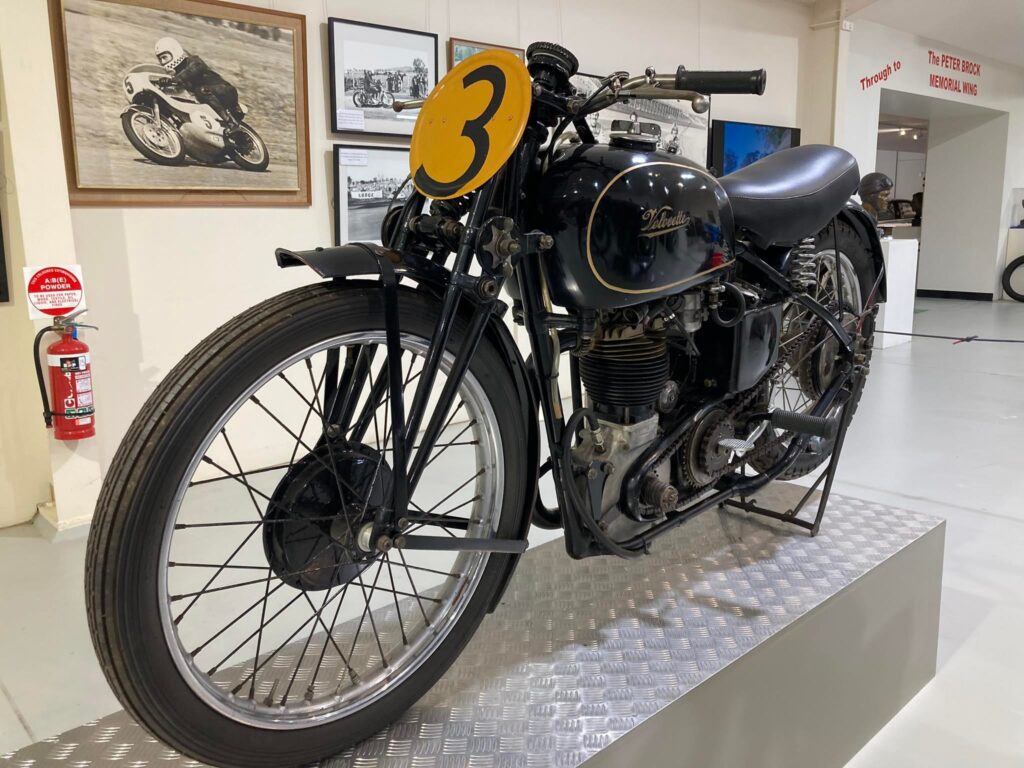

PHOTOS: With thanks to Brad Owen/The National Motor Racing Museum
Vale History Kept Alive
While the National Motor Racing Museum at Murray’s Corner on the Mount Panorama Circuit is synonymous with the track that runs past its front door, it also contains plenty of information on the formative days of the sport in the city.
Outside of a corner devoted to the Vale Circuit, below, a couple of the track’s more successful machines also take pride of place.
One example is the 1934 500cc KTT Velocette, left, which finished third in Senior TT on the Isle of Man.
By 1936, the single-cylinder “Monster” was on Australian shores and claimed the Australian 500cc Grant Prix at the Vale Circuit, as ridden by Don Bain.
Remarkably, the bike spent a decade away from the track before returning to win the 1946 500cc AGP at Mount Panorama with Ron Kessing.
Another highlight is the 1934 250cc Velocette, right, which won the lightweight class at the Vale races three times between 1934 and ’36.
Go to the museum to visit the cars, but make sure you stay for the bikes.
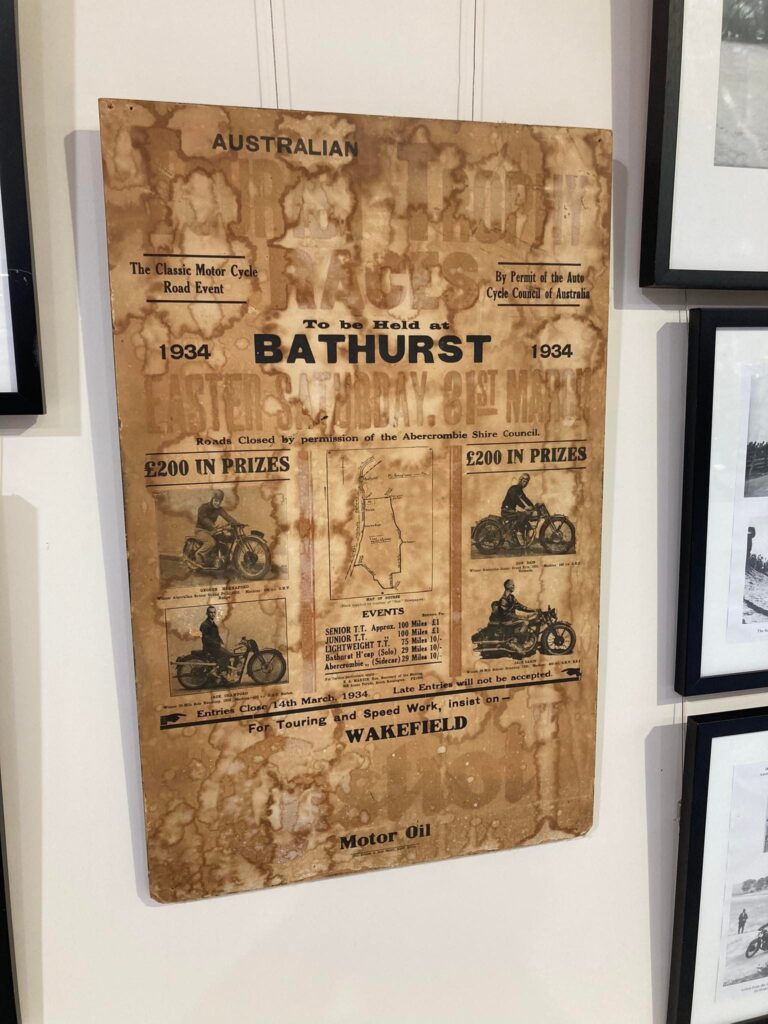

Cresting Vale
The best thing about the Vale Circuit is that you can still tour the circuit yourself, and outside of its full bitumen sealing and a minor detour at one section, the layout is as per the 1930s.
Reading the previously written literature describing the lap, one thing gets pummelled into your head: there’s a blind crest where the riders would catch air.
In fact, legend has it that one rider’s record leap of faith measured somewhere between 38 and 43 metres, depending on the storyteller, with spectators marking the landing on adjacent fence posts… a considerable distance by any standard considering the machinery of the time.
The meets at the Vale Circuit were popular with spectators, who especially loved vantage points that would entitle them to a firsthand view of the thrills and spills, especially at the crest.
While driving the circuit, the challenge is to pinpoint this noteworthy crest – and herein lies the problem: each successive crest around the lap is sharper and sketchier than the previous.
During the first three Easter events on the circuit, racing took place in a clockwise direction of travel, but the combination of the setting sun and the blinding dust saw the bikes ultimately run anti-clockwise in the closing years of competition.
Points of interest from the original circuit are still plentiful, such as the multiple crossings of Queen Charlotte’s Creek, with the northern bridge on Lloyds Road continuing to provide a one-lane wide chicane.

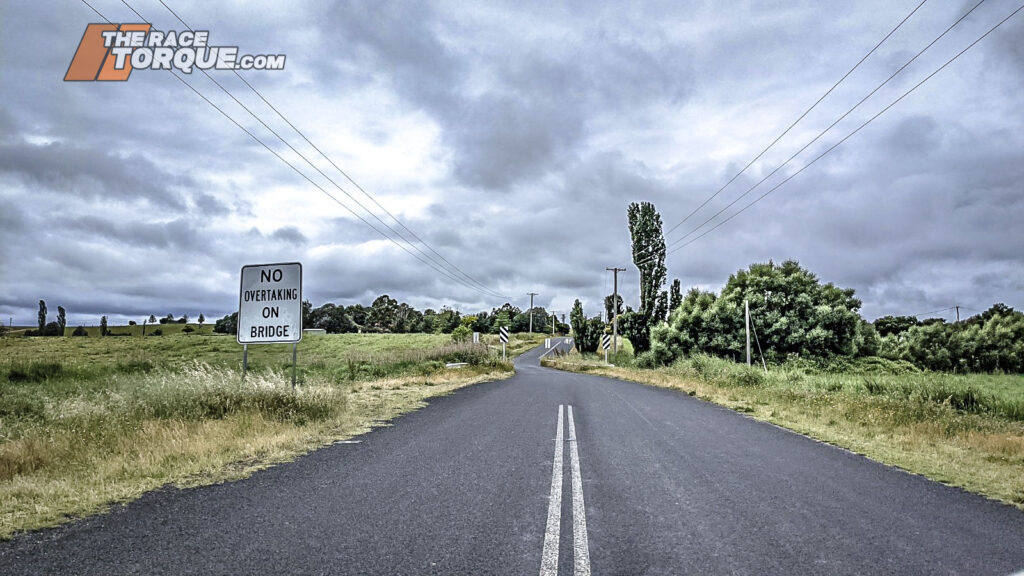
Vale Circuit Photos: Richard Craill
On Tour
If you start your lap at the corner of Vale Road and Lloyds Road, you are in the area of the old start-finish line, and you will see the large information signpost, above left, from which you can orientate yourself – for the purpose of this exercise, we lapped the circuit in its final anti-clockwise direction of travel.
Travelling east along Loyds Road, you cross narrow Palmers Bridge, before the 90-degree right turn onto Gormans Hill Road, which was known as Wright’s or Palmer’s Corner.

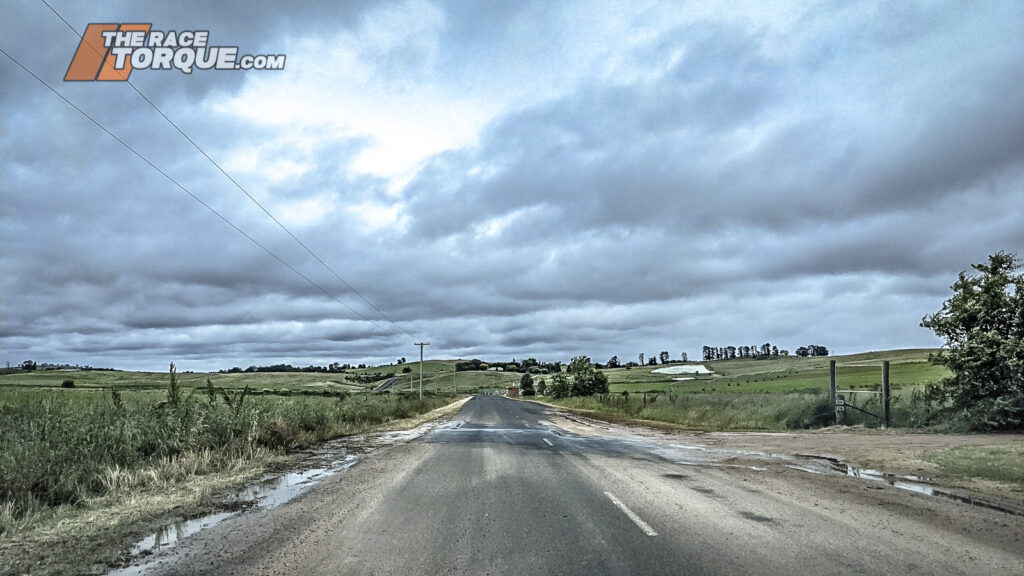
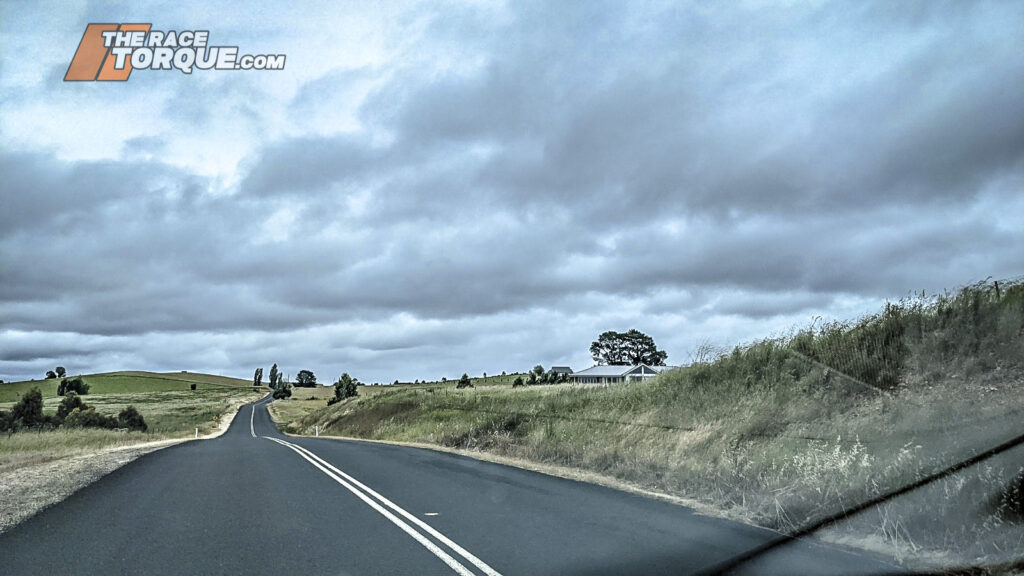



Gormans Hill Road is an absolute cracker, floating through gentle bends and blasting over hilltops, such as Mount Tamar and The Bluff.
Near the southern end, the corners tighten as the terrain continues to rapidly rise and fall.
The very bottom right-hand corner was named Devil’s Corner, a difficult task to navigate coming closely off the back of a nearby peak.




A quick blast back over the creek on Lagoon Road, now featuring a two-lane bridge, and it is the tight right-hander onto the long flat straight at Vale Road, which at the time was known as Kable’s or Orton Park Corner.
The 3.1km long straight was broken up by the ominously named Suicide Bend, with the start/finish line located just before the right hand turn back onto Lloyds Road.
Modern-day landmarks around the track include the train line to Blayney, which runs adjacent to the main straight, the city’s small animal pound, the Bathurst Cycling Club velodrome and mountain bike park, the new Bathurst Harness Racing Club, and the Omya calcium carbonate plant.
It’s a simple layout, so it’s hard to get lost.
And we bet you will complete more than one lap to appreciate it fully.

This is definitely the crest… right?














